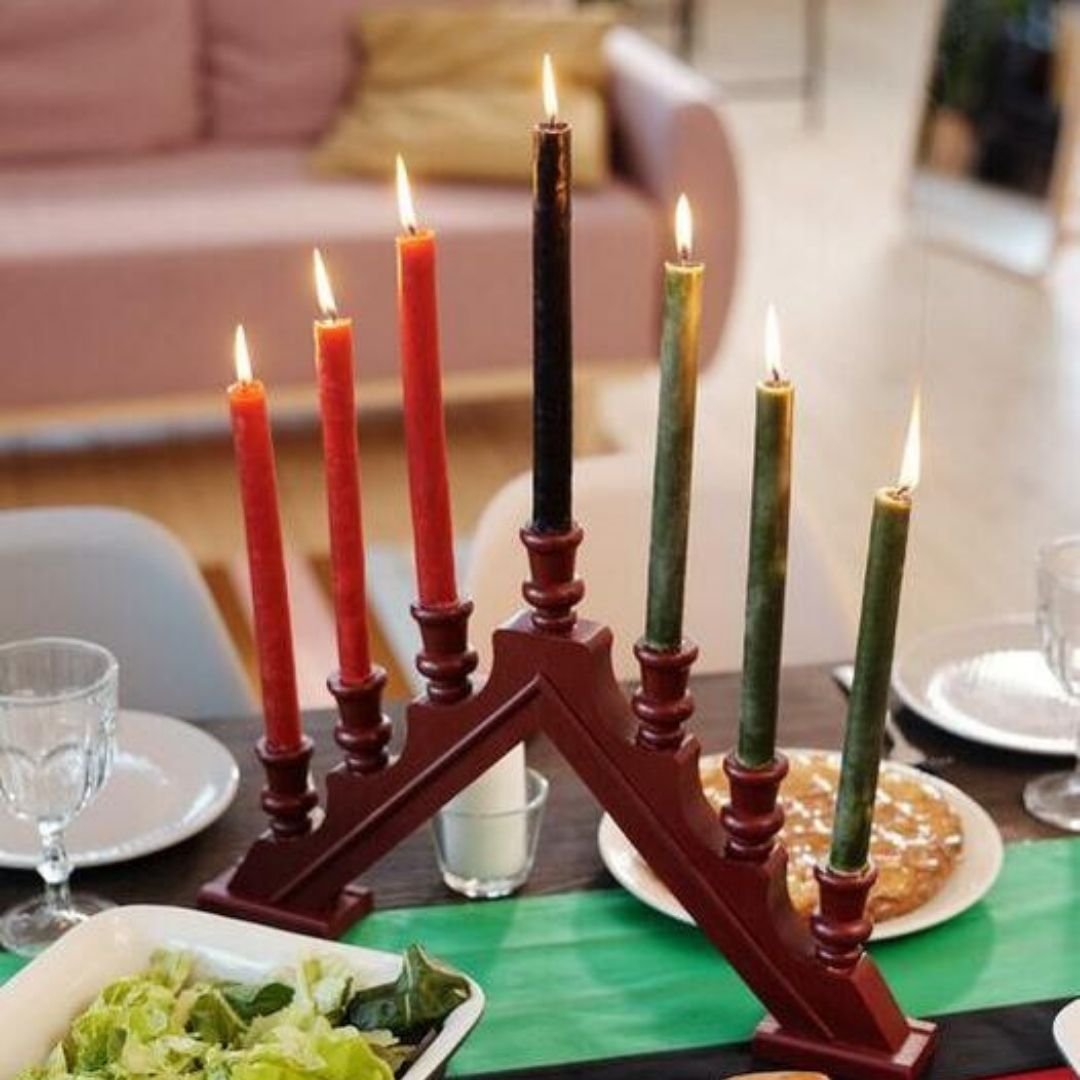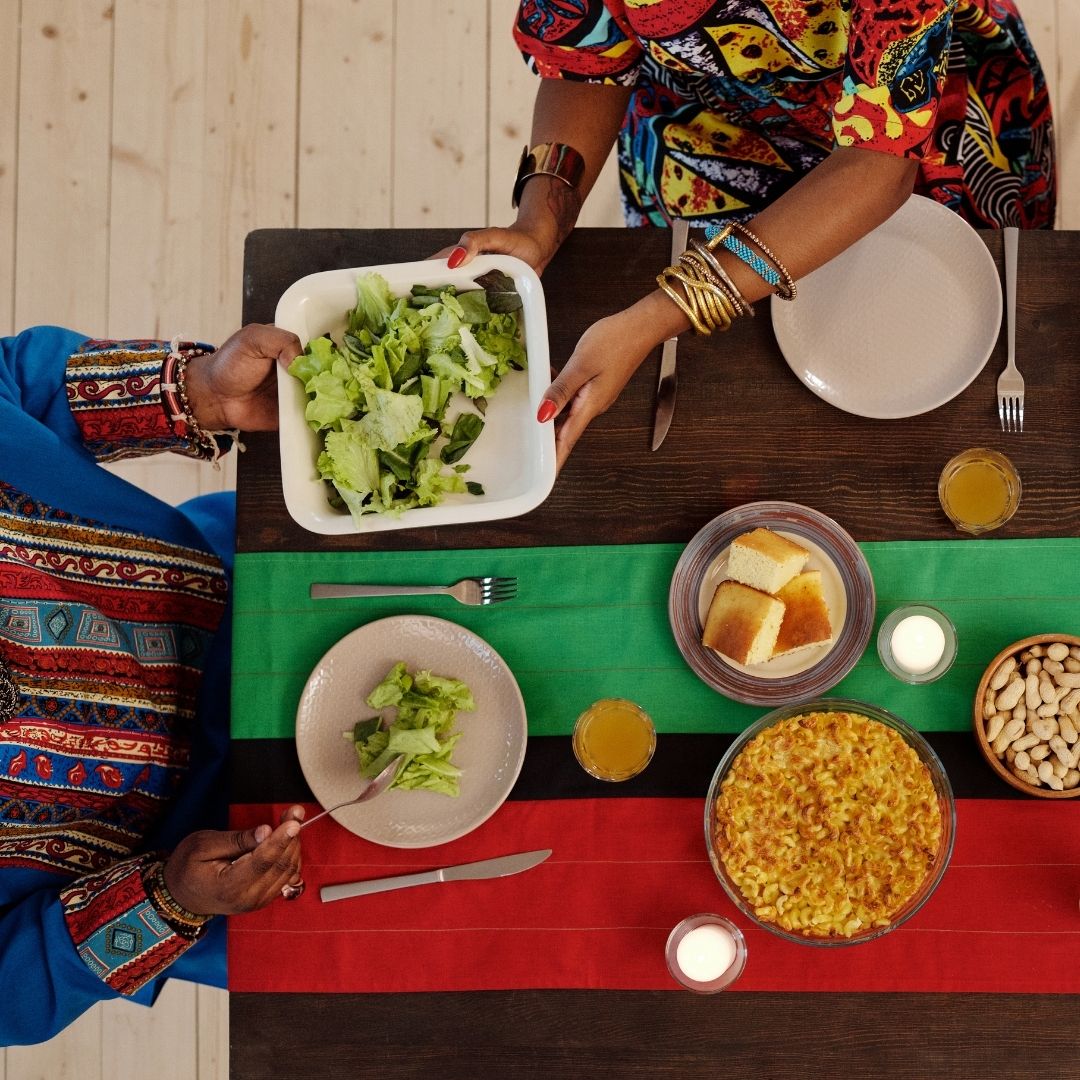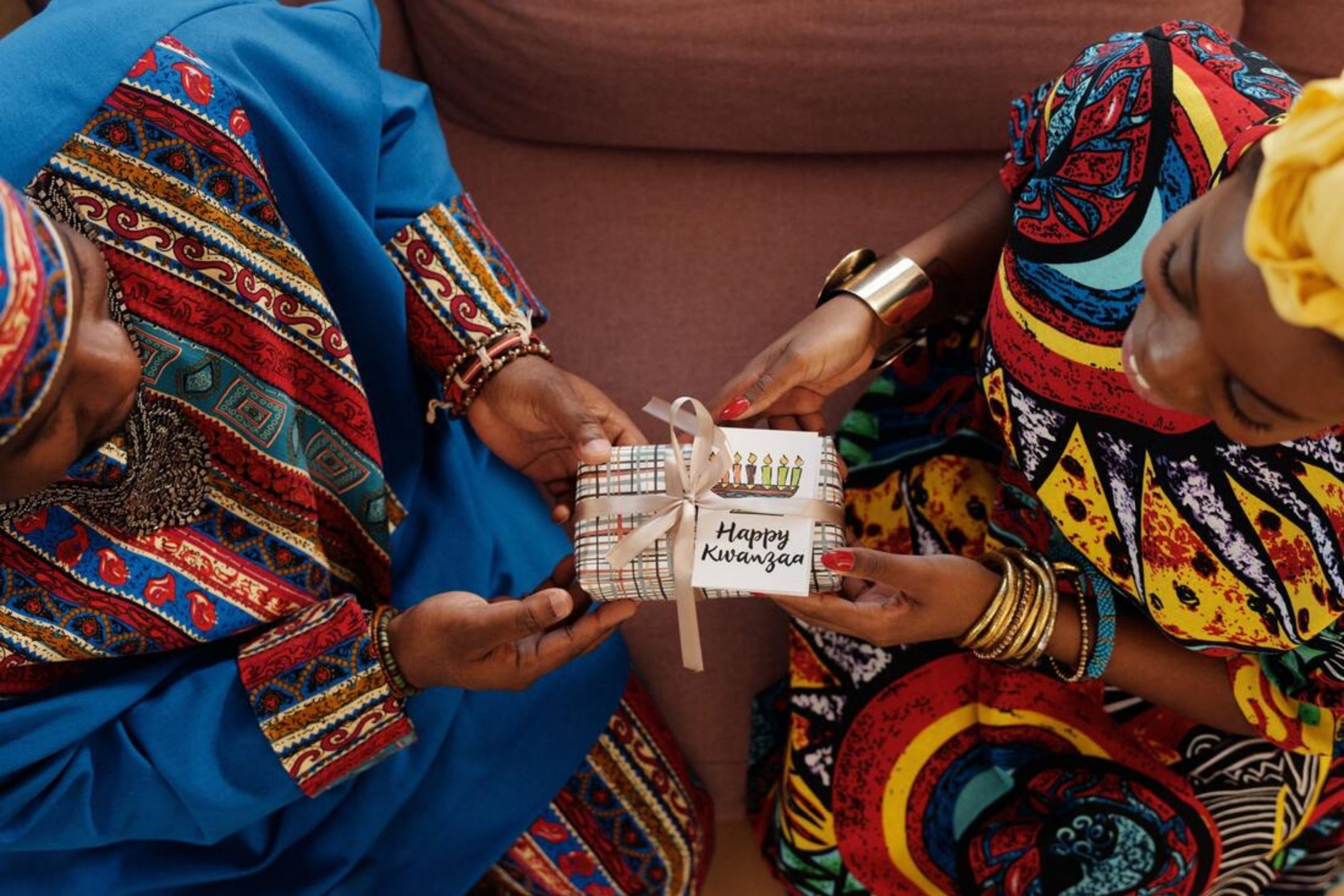First Fruits
Rituals and recipes for any family to celebrate Kwanzaa at home.
Kwanzaa is a celebration of family, community and culture. It was created in 1966 by Dr. Mauland Karenga, professor and chairman of Black Studies at California State University, to unite African Americans after the Watts riots in Los Angeles. More than 50 years later, families of all backgrounds are honoring Kwanzaa. Planning a celebration of Kwanzaa in your family is a good way to learn about and honor Black culture.
The celebration of Kwanzaa occurs every year from Dec. 26 to Jan. 1, which is the feast day. The word Kwanzaa means “The first fruits of the harvest,” from the Swahili word for first. Three main colors — black, red and green — are used as decorations, and each color has a special meeting: Black is the color of the people, red is the color of the bloodshed of ancestors, and green represents both Africa and hope.

Each of the seven days of the Kwanzaa celebration represents a principle:
Day One: Umoja – Unity
Day Two: Kujicjagulia – Self-determination
Day Three: Ujima – Collective work and responsibility
Day Four: Ujaama – Cooperative economics
Day Five: Nia – Purpose
Day Six: Kuumba – Creativity
Day Seven: Imani – Faith
A table is set up with the symbols of the ceremony. A candle holder holds seven candles in the Kwanzaa colors: a black candle in the middle, three red candles on one side of the black candle and three green candles on the other side. A new candle is lit on each day, the black one in the first day, moving back and forth from red to green, ending with green on the last night with hope for the future.

Each candle represents one of the seven core principles (the Nguzo Saba) of the Kawaida philosophy, a Swahili word meaning traditions. It is very easy to find the candle holder (kinara) and the seven candles (mishumaa soba) online.
The black candle is lit on the first day of Kwanzaa because it represents the color of the people. The color represents hope, creativity and faith.
The color red represents the struggle for self-determination and people. The red candles are lit on Days Two, Four and Six. Day Two represents defining, naming, creating and speaking for oneself. Day Four encompasses building and maintaining individually owned stores, shops and other businesses. On Day Six, the goal is to do everything possible to make a difference and to leave the community in better condition than was inherited.
The green candles are lit on Days Three, Five and Seven. Day Three encompasses building and maintaining the community by working together, taking on each other’s problems and solving them together. Day Five takes on the collective vocation of building the community and developing it as a way to restore the people to their traditional greatness. Day Seven challenges people to believe in each other, honor their struggle as righteous and trust that they will be victorious.
Besides the candle holder with the seven candles, the table is also set with a straw mat, an ear of corn, unity cup, vegetables and fruits, and gifts.
The Kwanzaa feast on the Day Seven may include food, music, dancing and the last candlelight ceremony. The menu for the feast will include recipes made from the harvested fruits and vegetables, such as sweet potatoes, okra, corn, beans and collard greens, plus dishes with chicken or pork. Small homemade gifts and books may be exchanged.
Here are some resources if you would like to celebrate Kwanzaa with your family:
Kwanzaa food: Recipes, sample menus and other suggestions for a Kwanzaa family feast
Crafts: Kwanzaa craft projects for children.
Books:
- Together for Kwanzaa, by Juwanda G. Ford and Shelly Henenberger (Random House Books for Young Readers, 2000).
- The Story of Kwanzaa, by Donna L. Washington, illustrated by Stephen Taylor (Trophy Picture Books, 1997).
- Holidays Around the World: Celebrate Kwanzaa, by Carolyn Otto (National Geographic Kids, 2017)
Find dozens of other books on Kwanzaa in English and Spanish, print, e-book and audio format, at the Santa Fe Public Library.



